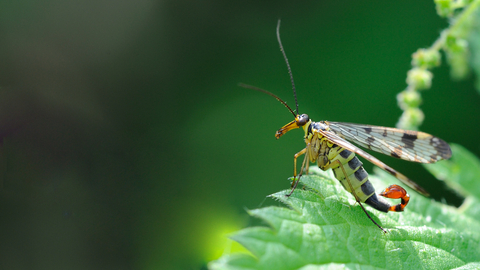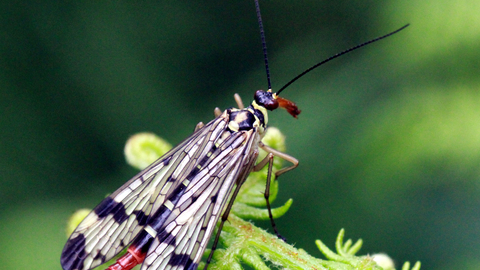
Scorpion Fly ©Amy Lewis

Jim Higham
Scorpion fly
Scientific name: Panorpa communis
The scorpion fly, as its name suggests, has a curved 'tail' that looks like a sting. It is, in fact, the males' claspers for mating. It is yellow and black, with a long 'beak'. Look for it in gardens and woods.
Top facts
Category
Stats
Length: up to 3cmConservation status
Common.
